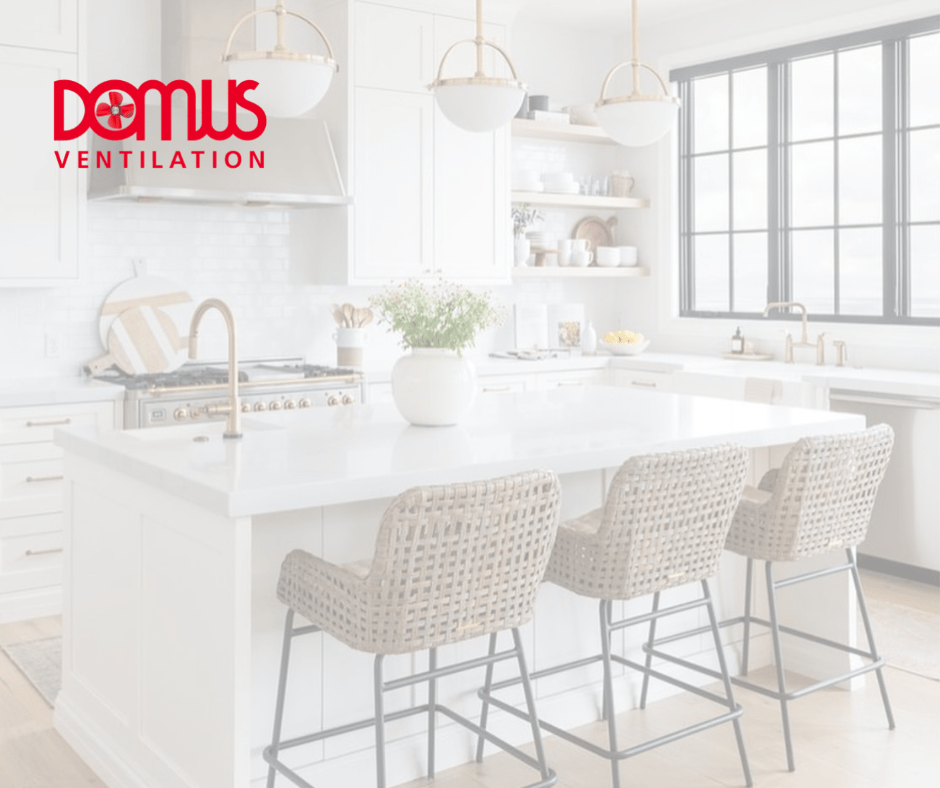

By Paul Williams, Domus Ventilation Product Manager
We may all talk about ‘the great outdoors’, but the truth of the matter is that we spend 90% of our time indoors. For the majority of people, that time is mostly divided between home and our place of work / education. The quality of our indoor environments – especially our homes which get the lion’s share of our time – therefore matter greatly for both our health and wellbeing.
The impact of poor-quality housing is well documented, with the Building Research Establishment1 (BRE) estimating the cost to the NHS in England being £1.4billion a year in treatment bills, primarily from exposure to cold and accidents. But it’s not just defects in poor quality housing stock that are the problem. We need to look at the bigger picture and how we approach housing design, which is something the Healthy Homes Bill has in its sights.
July 2022 saw the Second Reading of the Healthy Homes Bill in the House of Lords. This Private Members Bill aims to transform the regulation of the built environment by making provision for the delivery of healthy homes and neighbourhoods that support the physical, mental and social wellbeing of residents. The Bill addresses a very wide range of aspects that impact the health of a home, one of which is indoor and ambient air pollution.
Sources of air pollution
Sources of air pollution are varied.
Externally, NOx (the collective name for Oxides of Nitrogen, with NO and NO² having the most effect on the environment and human health) and PM2.5 (particulate matter which is a mixture of solid particles and liquid droplets such as soot) are the main offenders. The key emissions sources for these are transport and domestic fossil fuel burning respectively. The UK government’s latest data shows that NO² limits are being exceeded in 33 out of 43 air quality assessment zones. When it comes to PM2.5 levels, over 35% of local authorities (home to 22 million people) had unsafe levels in 2018.
Air pollution entering our homes is not the only issue to contend with when it comes to indoor air quality. Building fabric, such as insulation, and countless building products emit potentially harmful pollutants into our homes, along with everyday activities such as cleaning and cooking. Volatile organic compounds (VOCs) are some of the most common pollutants as they are found throughout building products. There is currently a distinct lack of standards for the control of indoor pollutants, although the recently revised Building Regulations ‘Ventilation: Approved Document F’ now includes guidance on indoor air pollution, including exposure limits and times for Carbon monoxide (CO), NO2, Formaldehyde (CH2O) and TVOC.
Impacts of Air Pollution
Air pollution can harm every organ in our body, can shorten our lives, and contribute towards chronic illness. Public Health England estimates 28,000 – 36,000 deaths a year can be attributed to long-term exposure to air pollution, making it the biggest environmental threat to health in our country.
And it’s not just our health that suffers, but our wealth also; DEFRA estimates the economic cost from the impacts of air pollution in the UK at an incredible £9-19 billion every year.
Designing out Air Pollution
Whilst we can’t prevent people from using potentially harmful cleaning products at home, or frying meat (another source of indoor air pollution), there are measures we can take to extract these pollutants, to reduce external air pollutants entering the home, and to limit the pollutant emissions from the building fabric.
As laid out in the Healthy Homes Bill: “all new homes… must be built to minimise, and where possible eliminate, the harmful impacts of air pollution on human health and the environment”. In order to achieve this, good ventilation is essential to disperse pollutants.
Under Building Regulations, natural ventilation systems, such as background vents, are permitted although only for less airtight homes with a design air permeability of ≥ 5. However, natural ventilation isn’t an efficient means of ventilating a home as heat will be lost and there is no guarantee of moisture or pollutants migrating outside. As recognised in Building Regulations, good ventilation is best achieved through mechanical ventilation systems, with the most effective being Mechanical Ventilation with Heat Recovery (MVHR). These bring fresh air into the home and extract stale air, along with the pollutants.
Mechanical ventilation systems not only address air quality in terms of removing pollutants, but they are also highly effective at preventing condensation and subsequent mould formation; dealing with overheating in the more air tight new homes we now build; and even in reducing air born virus transmission. So even if we meet all our goals and bring external air pollution down to WHO acceptable guidelines, mechanical ventilation remains an important aspect of a healthy home.
When it comes to reducing external air pollutants entering the home, Building Regulations provides advice on the location of intake grilles, primarily away from the direct impact of the sources of local pollution. Where urban traffic is a source of pollution, the air intakes for dwellings next to busy urban roads should be as high as possible and located on the less polluted side of the building. Ventilation intakes should not be located in courtyards or enclosed urban spaces where air pollutants are discharged.
However, in areas of high pollution, this may not be enough. In these circumstances, the MVHR system may actually be bringing polluted air into the home. Although they come equipped with standard filters, these can only do so much. Installing a powerful Carbon filter to the MVHR system would be an effective approach. The Domus Ventilation’s NOX-FILT, for example, which works on the supply leg of the ducting, prevents up to 99.5% of NO² pollution from entering a home.
Limiting potentially harmful emissions from the building fabric requires the use of ‘healthier’ building materials and products. As the Healthy Homes Bill states: “all new homes should not contribute to unsafe or illegal levels of indoor or ambient air pollution”. What constitutes healthier, safer building materials is for another article though.
Domus Ventilation is a manufacturer of market-leading ventilation systems that save energy and improve indoor air quality.
vent.info@domusventilation.co.uk
1 ‘The Cost of Poor Housing in England’, BRE




